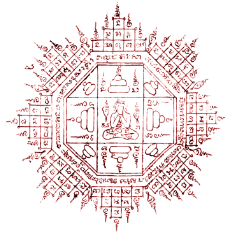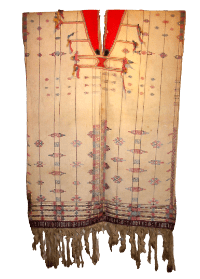Bhutanese Textiles:Weaving from the Heart
Hosted by the Bank of Thailand Museum and the Asian Cultural Center of Vermont
November 10th, 2008 – Febuary 10th, 2009
Chiang Mai, Thailand
































The Bank of Thailand invited over 25 different media organizations to a press release conference announcing and describing the exhibition as well as the purpose of the event. Shown here is Rungnapa Bommer discussing the textiles and showing examples of some of the garments that will be on display.
Two television interviews were arranged for members of the American and Thai host committees as well as a series of three radio talk shows. Jay Bommer and Khun Prasopsuk during a morning talk show program at WNBT in Chiang Mai.
Jay Bommer with Adam Silver, Director of the Asian Cultural Center of Vermont during a radio interview with Radio Thailand’s Helping Hands program.
Khun Jirawan the Head Curator for the Bank of Thailand’s Museum giving an interview during the press release conference in Chiang Mai
Building walls for display
Trying different layouts
Sewing on the muslin membrane with a female strip of Velcro attached to it. Carefully tacked on the entire piece to support the weight evenly.
A strip of wood that has been sealed is mounted on the wall and the male side of the Velcro attach to the wood. The textile is then mounted to the Velcro, which gives it a floating feel.
We created a zigzag with the wall cubes to maximize the space using both sizes of the walls and making 3 different viewing isles to help keep the visitors moving.
The use of mannequins was very helpful to the public so they could get a good view of how the garments are folded and worn.
Torie Olson's photo breathe life back into the textiles. They give the viewer more of a feel for what the garment makers' lives were like. “Olson’s photographs charmed viewers with a sparkling humanity that distinctly reveals Bhutanese culture.” Susan Avila, Fiberarts Magazine.
Display of woman’s dresses
Traditional belts on left, Olson’s photos Princes in the Dance of the Noblemen & the Ladies and Princesses & Old Woman in the Dance of the Noblemen & the Ladies (Phole Mole) on right.
Woolen rain cover called charkeb, Olson’s photos Black Hat Dance and Dance of the Stag & the Hounds (Shawo Shachi) on right.
The tunic style garments are the oldest pieces in the collection. They thought to be 100-200 years old and predate the larger women’s dresses the kira. The collection displayed 5 of pieces.
The piece on the bottom is a Bhutanese thrown cover and is bracketed with Olson’s Door with Dharma Wheel and Dragon Door with “Phoenix” The tangkha painting is 18th century Tibetan. It was borrow from Andrew Failes and Rachel Park collection for the BOT event.



